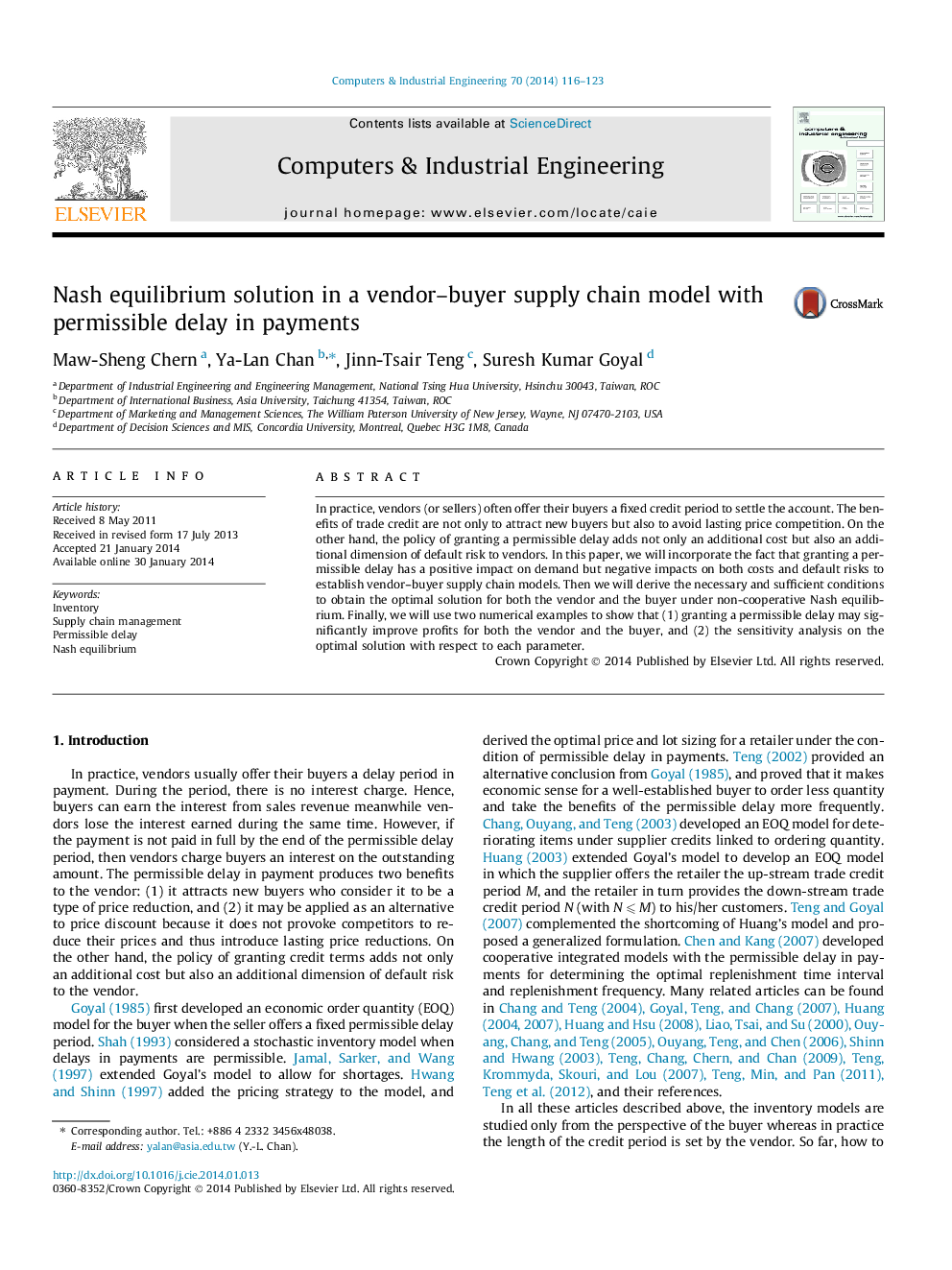| کد مقاله | کد نشریه | سال انتشار | مقاله انگلیسی | نسخه تمام متن |
|---|---|---|---|---|
| 1133999 | 1489096 | 2014 | 8 صفحه PDF | دانلود رایگان |
• The benefits of trade credit are not only to attract new buyers but also to avoid lasting price competition.
• Granting a permissible delay has a positive impact on demand but negative impacts on both costs and default risks.
• Necessary and sufficient conditions are derived to obtain the optimal solutions for both players under Nash equilibrium.
• Numerical examples reveal that granting a permissible delay may significantly improve profits for both players.
In practice, vendors (or sellers) often offer their buyers a fixed credit period to settle the account. The benefits of trade credit are not only to attract new buyers but also to avoid lasting price competition. On the other hand, the policy of granting a permissible delay adds not only an additional cost but also an additional dimension of default risk to vendors. In this paper, we will incorporate the fact that granting a permissible delay has a positive impact on demand but negative impacts on both costs and default risks to establish vendor–buyer supply chain models. Then we will derive the necessary and sufficient conditions to obtain the optimal solution for both the vendor and the buyer under non-cooperative Nash equilibrium. Finally, we will use two numerical examples to show that (1) granting a permissible delay may significantly improve profits for both the vendor and the buyer, and (2) the sensitivity analysis on the optimal solution with respect to each parameter.
Figure optionsDownload as PowerPoint slide
Journal: Computers & Industrial Engineering - Volume 70, April 2014, Pages 116–123
